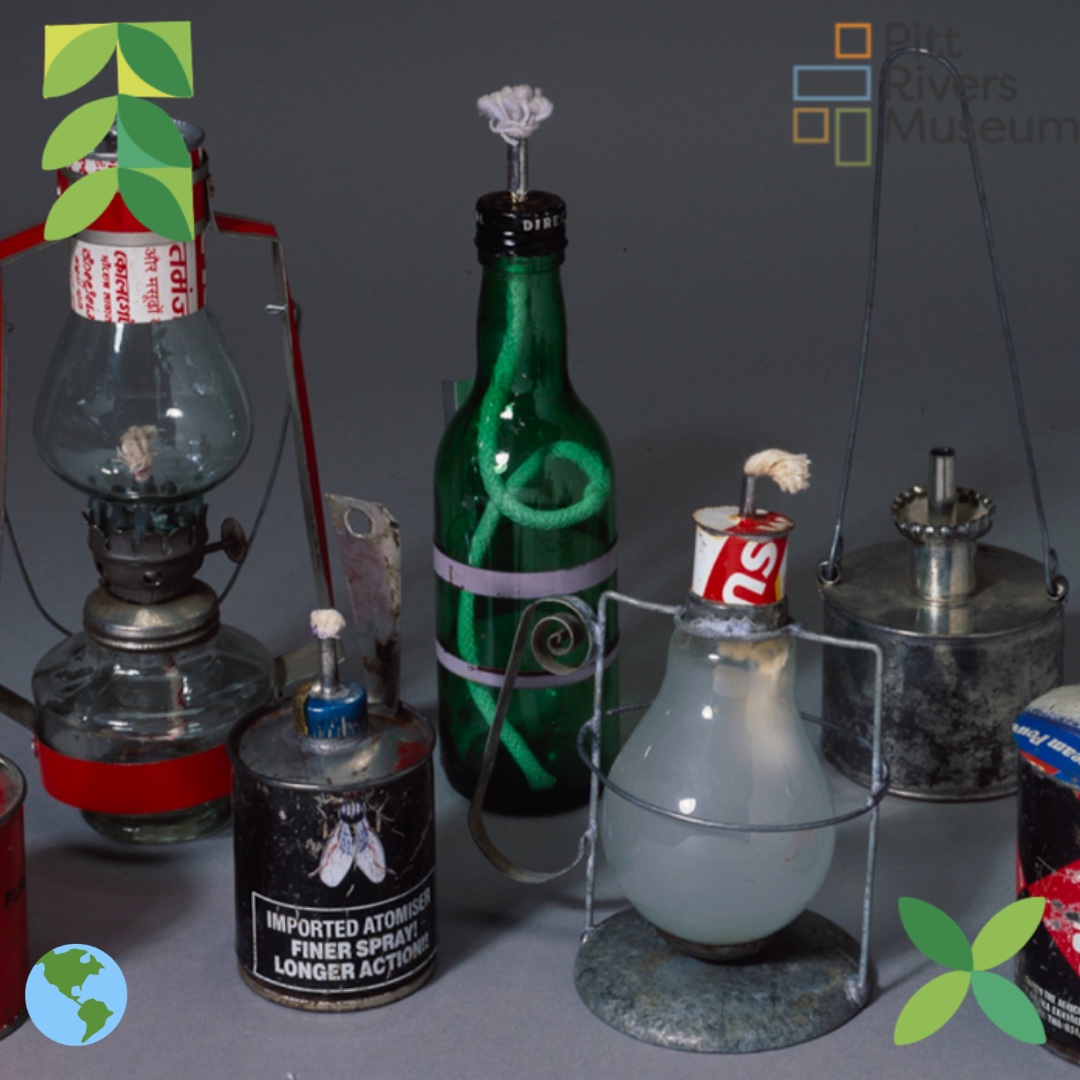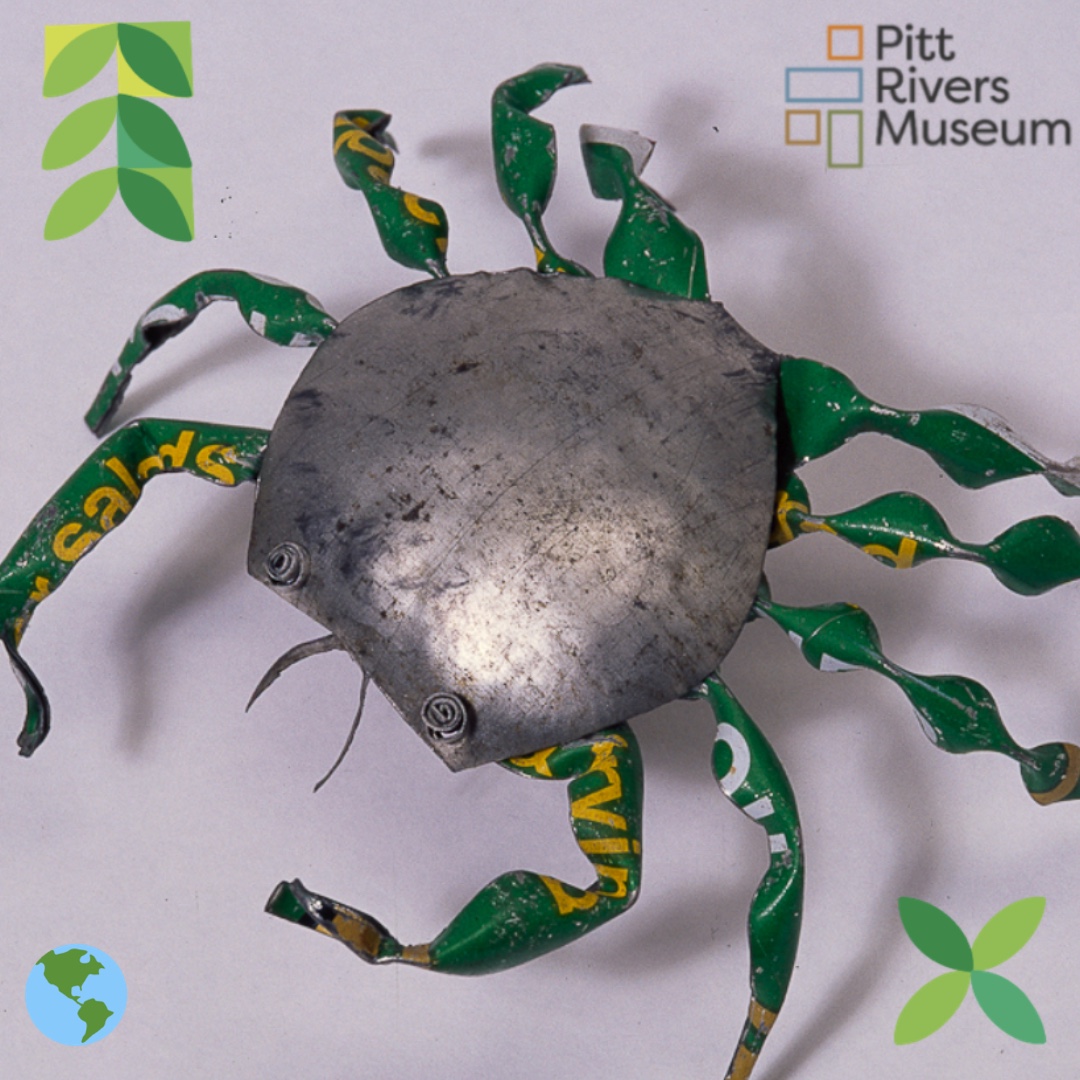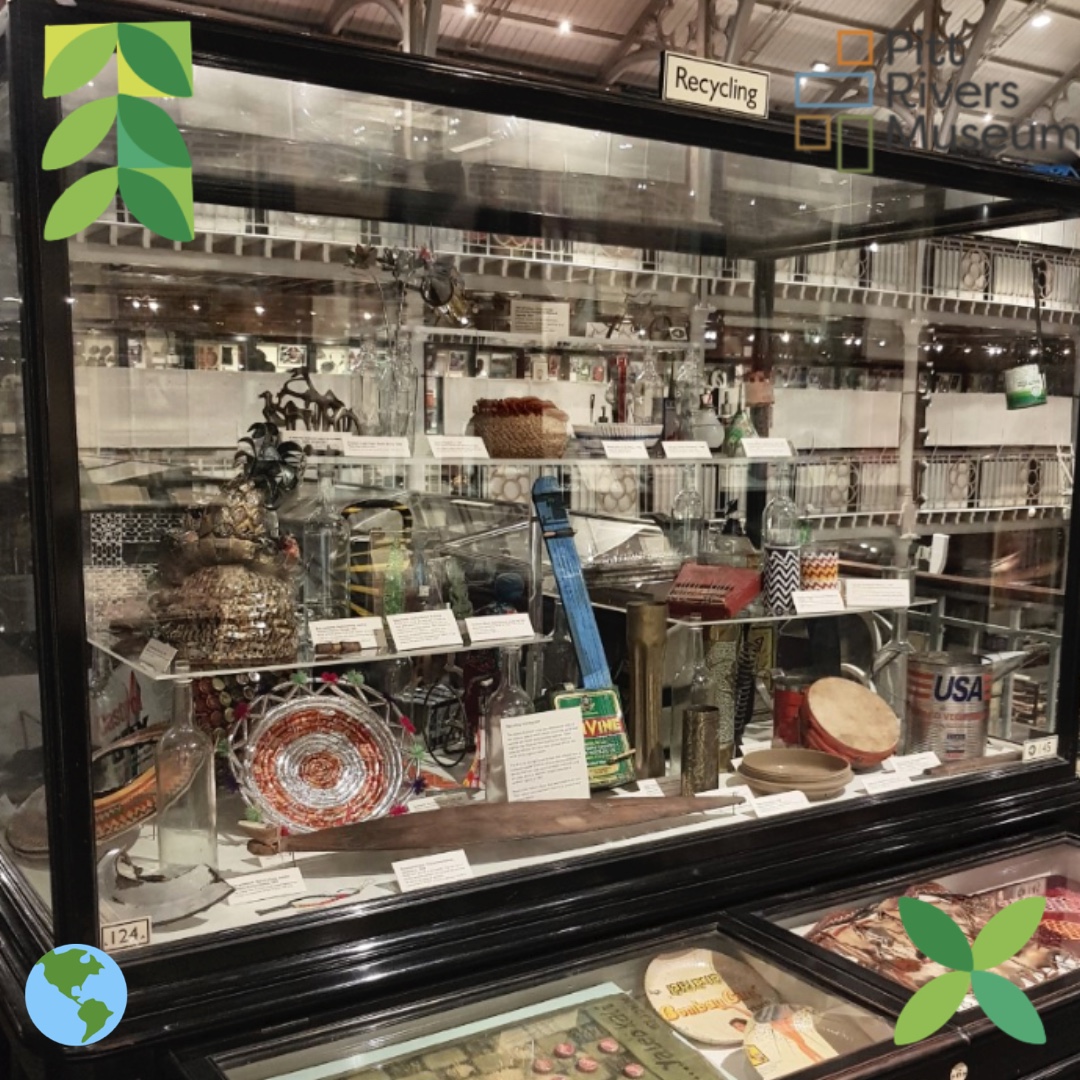During the Matters of Care conference, we will be talking about objects in the Pitt Rivers Museum that highlight the impact we have as human beings on the planet. This week we are sharing objects made from recycled materials to think about innovative and creative ways of repurposing material, how early man navigated their surroundings using fire, and our impact on animal habitats that causes species to become endangered.

These Kerosene lamps from Mumbai in India are made from repurposed materials such as glass bottles, light bulbs and tin cans. The human eye, although capable of detecting a wide variety of colours struggles to see in low-light conditions. Without artificial light our activity would be restricted to waking hours when our natural source of light, sunlight, is present. To understand our relationship with light production, let's go back to the early stone age (the paleolithic era) when we first began to control fire. Harnessing reliable light extended the amount of time we could forage, build tools, create art and socialise. A reliable source of heat helped us cope with colder temperatures and climates as we migrated throughout Europe and Eurasia. Cooking food meant that meat and root vegetables became easily chewable and could be digested quickly. Faster digestion and dietary flexibility allowed us to have access to better nutrition, giving us more energy and more time to be active. Essentially, we spent less time eating and more hunting and gathering.
The most reliable sources of evidence for early fire use are found in sheltered areas. Archaeologists tend to search areas like caves for signs like charcoal and burnt bone, flint tools or plant seeds. Some sites like Wonderwerk Cave in South Africa date back one million years ago. There are several more sites from 400,000 years ago that have evidence of burnt ground, charred bone and tools. Check out archaeological sites such as Beeches Pit in England, Schöningen in Germany, Terra Amata in France, and Kalambo Falls in Zambia to learn more.

This model crab is from Cape Town in South Africa. Its shiny shell, colorful legs and grasping claws have been fashioned from recycled tin cans. There are over 6,000 species of crab across the globe, living in oceans, rivers, and on land. Crabs play an important role in supporting marine, river and forested coastal ecosystems. In recent years habitat loss and over-harvesting for the biomedical industry have had such a devastating effect that the Atlantic horseshoe crab and Tri-spine horseshoe crab are endangered and vulnerable to extinction. Although this crustacean creation doesn't resemble a horseshoe crab, its recycled nature reminds us how human impact can play a role in either damaging or protecting the planet.

Berna, F., Goldberg, P., Horwitz, L.K., Brink, J., Holt, S., Bamford, M. and Chazan, M., 2012. Microstratigraphic evidence of in situ fire in the Acheulean strata of Wonderwerk Cave, Northern Cape province, South Africa. Proceedings of the National Academy of Sciences, 109(20), pp.E1215-E1220.
MacDonald, K., 2017. The use of fire and human distribution. Temperature, 4(2), pp.153-165.
Pettitt, P., Leluschko, S. and Sakamoto, T., 2017. Light, human evolution, and the Palaeolithic. In The Oxford Handbook of Light in Archaeology.
Preece, R.C., Gowlett, J.A., Parfitt, S.A., Bridgland, D.R. and Lewis, S.G., 2006. Humans in the Hoxnian: habitat, context and fire use at Beeches Pit, West Stow, Suffolk, UK. Journal of Quaternary Science: Published for the Quaternary Research Association, 21(5), pp.485-496.
Roebroeks, W. and Villa, P., 2011. On the earliest evidence for habitual use of fire in Europe. Proceedings of the National Academy of Sciences, 108(13), pp.5209-5214.